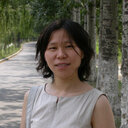Anti-tumor effects of flavonoids from the ethnic medicine Docynia delavayi (Franch.) Schneid. and its possible mechanism.
Từ khóa
trừu tượng
This study investigated the active components and the anti-tumor efficacy and mechanisms of the flavonoids from Docynia delavayi (Franch.) Schneid. (DDS). MTT assay was used to examine the growth inhibitory effects of the four flavonoids, including chrysin, quercetin, naringenin, and avicularin that were isolated from the rhizome of DDS, on human hematomas cell (HepG2), esophageal carcinoma cell (EC109), human cervical adenocarcinoma cell (Hela), human colon adenocarcinoma cell (SW480), and African green monkey kidney cell (Vero cells). The anti-tumor mechanism of chrysin on HepG2 was further investigated by the methods of fluorescence staining, flow cytometry, and immunoblotting. The results showed that the inhibitory activity of chrysin was much stronger than the other three flavonoids on HepG2, EC109, Hela, and SW480 cells for 48 h treatment in vitro. Moreover, no inhibiting effect of chrysin on the proliferation of normal cells (Vero cells) was observed. Further study revealed that chrysin caused HepG2 cell shrinkage, membrane blebbing, and apoptotic body formation, all of which were typical characteristics of apoptosis programmed cell death. Flow cytometric analysis demonstrated that chrysin increased the sub G0/G1 population, which indicated the increased cell apoptosis, thus preventing cells from entering the S phase as the population in G2/M or S phase declined; whereas in G0/G1 phase, it increased. In addition, immunoblot results showed that chrysin significantly increased the expression levels of caspase-3 and Bax proteins, and it decreased the expression level of B-cell lymphoma/leukemia-2 (Bcl-2) protein. These findings indicate that chrysin is the major flavonoid present in DDS, and it induces HepG2 cell death via apoptosis, probably through the participation of caspase-3, Bax, and Bcl-2 proteins.


